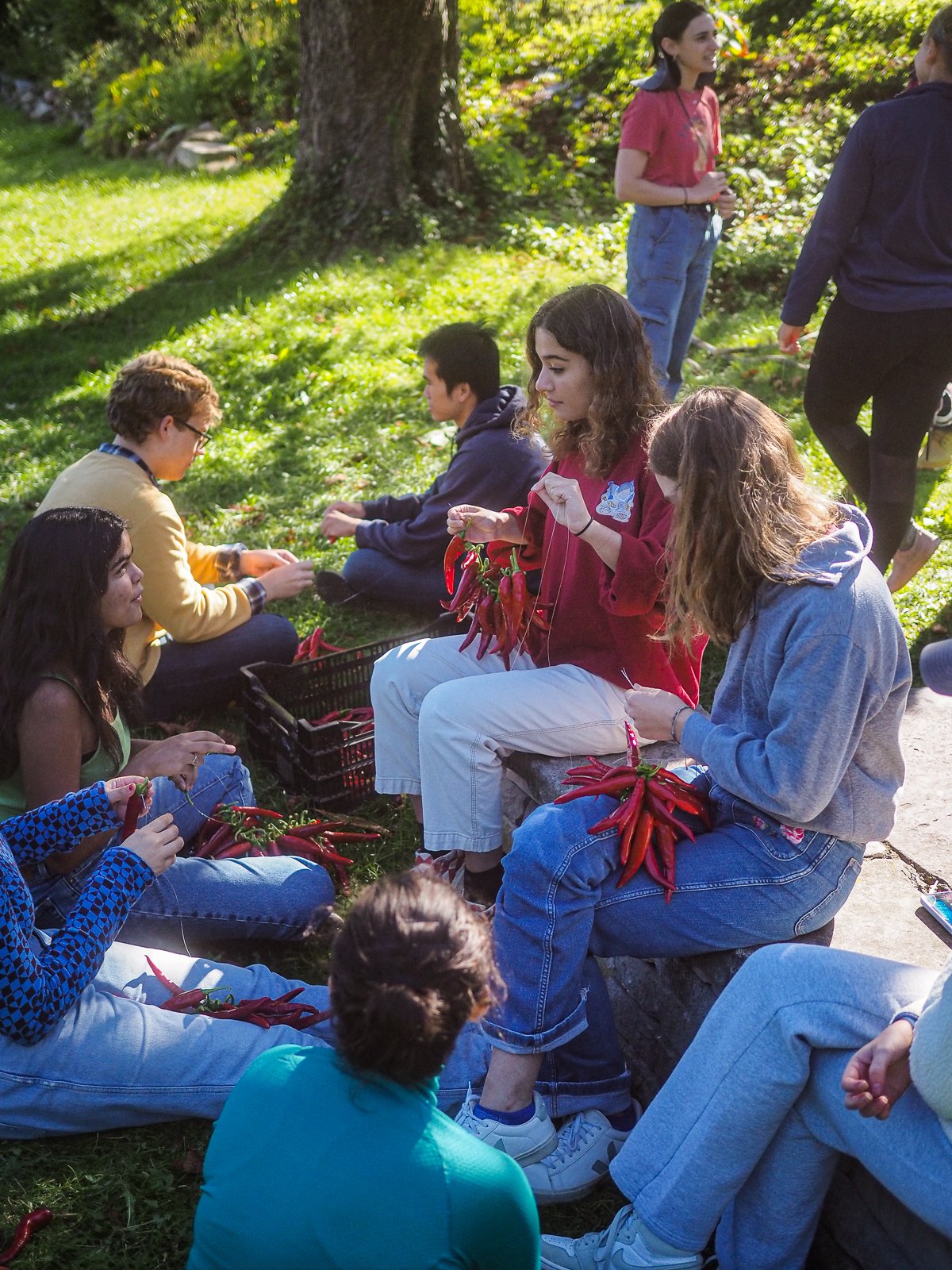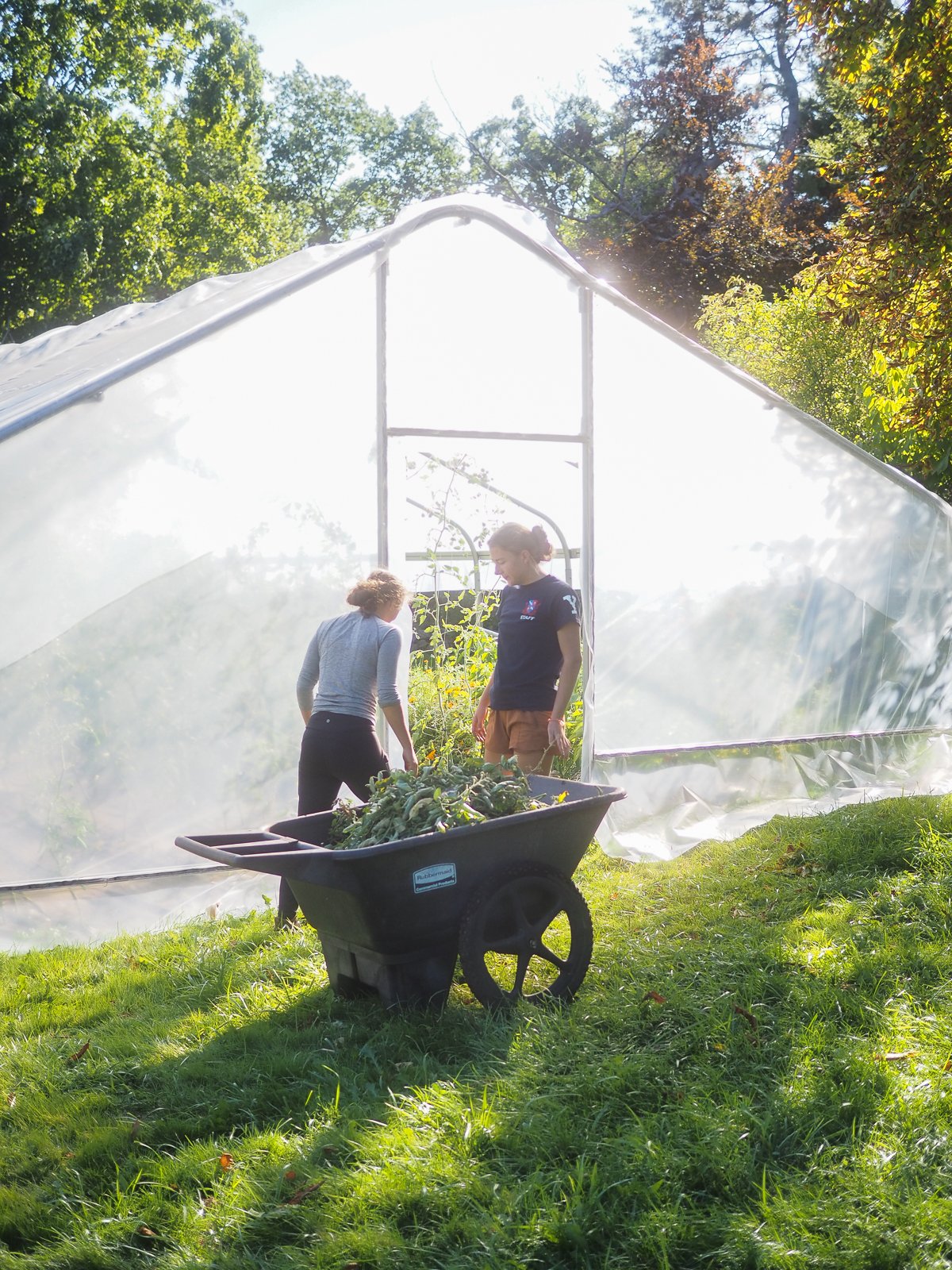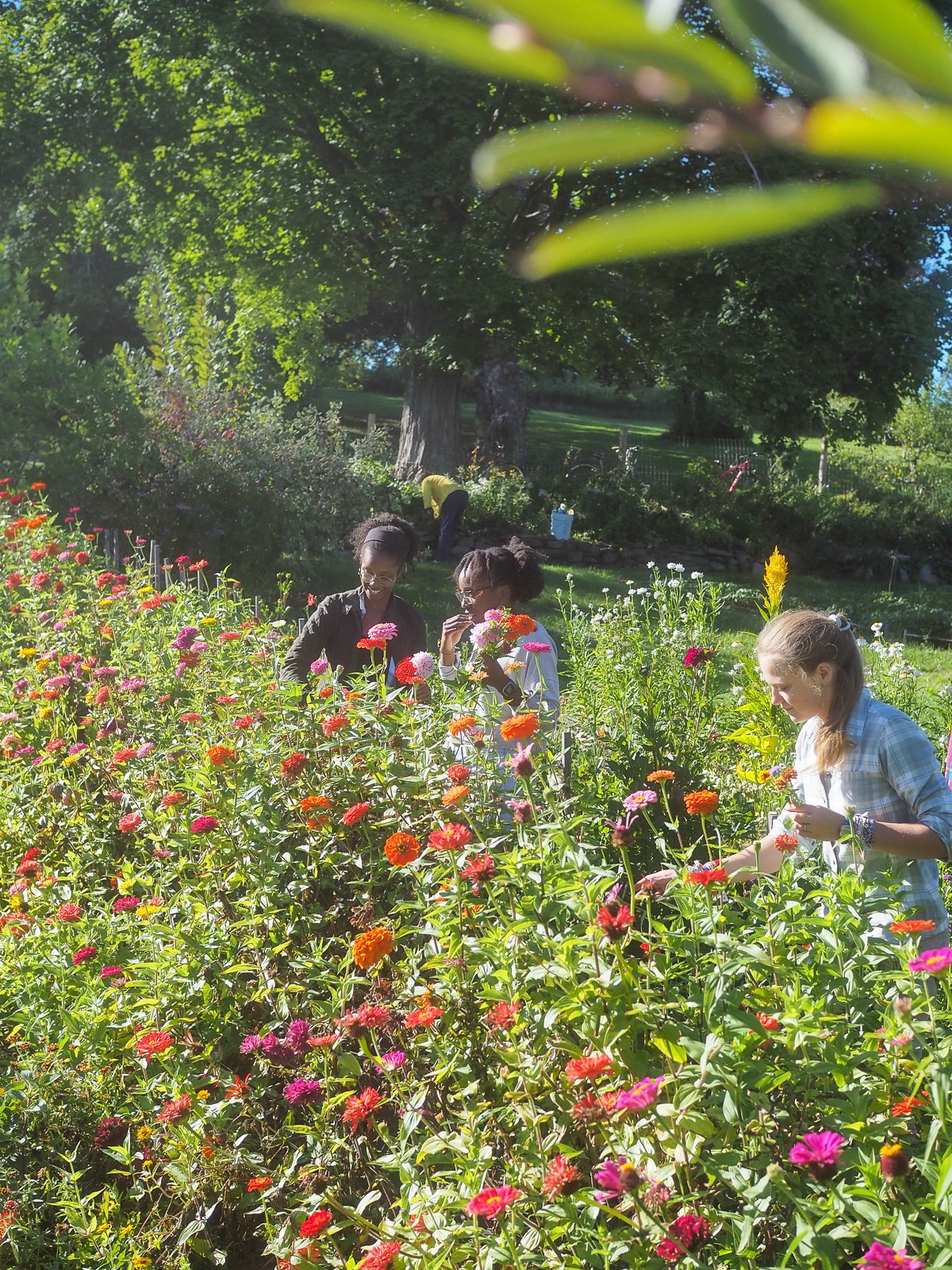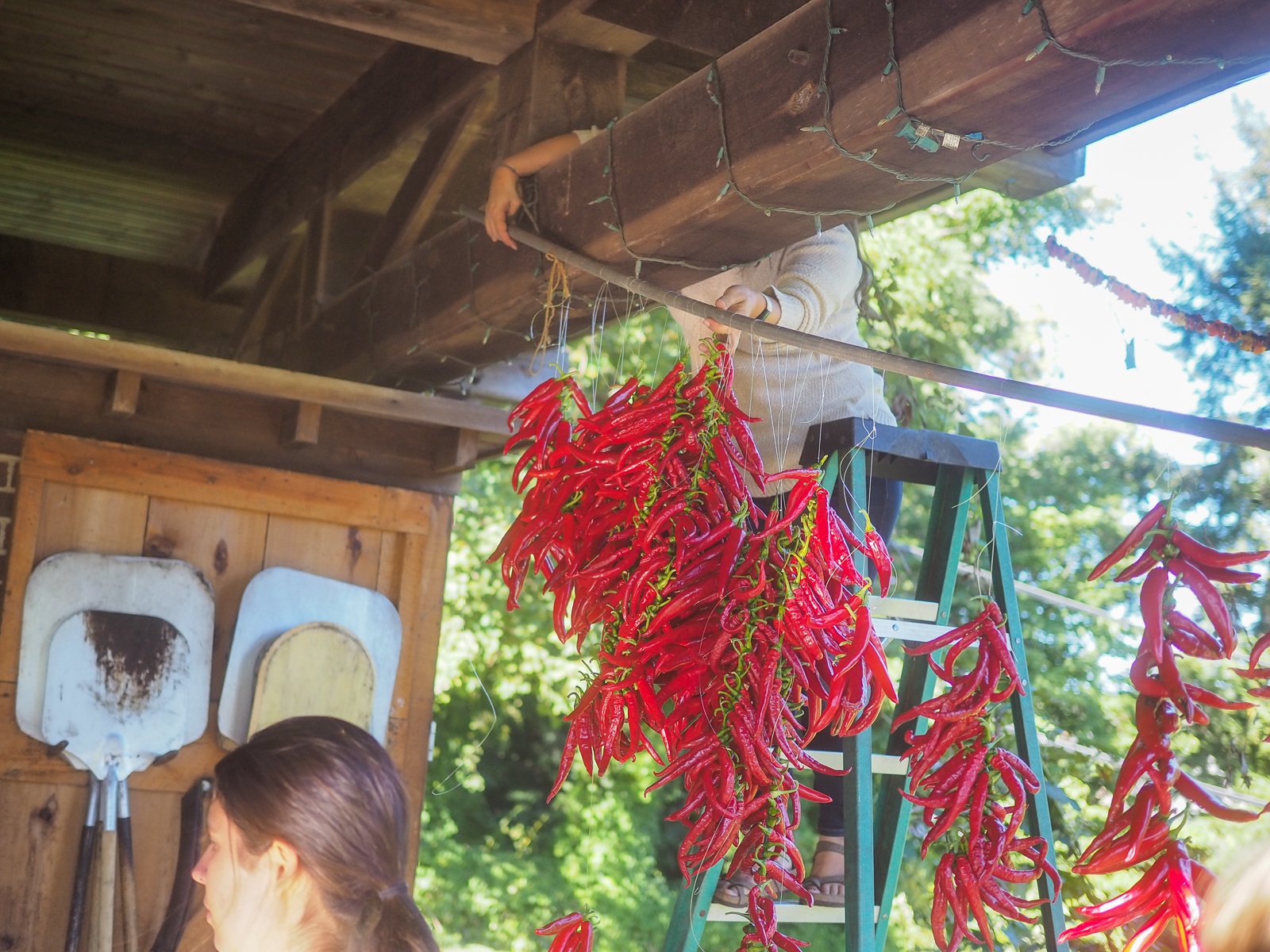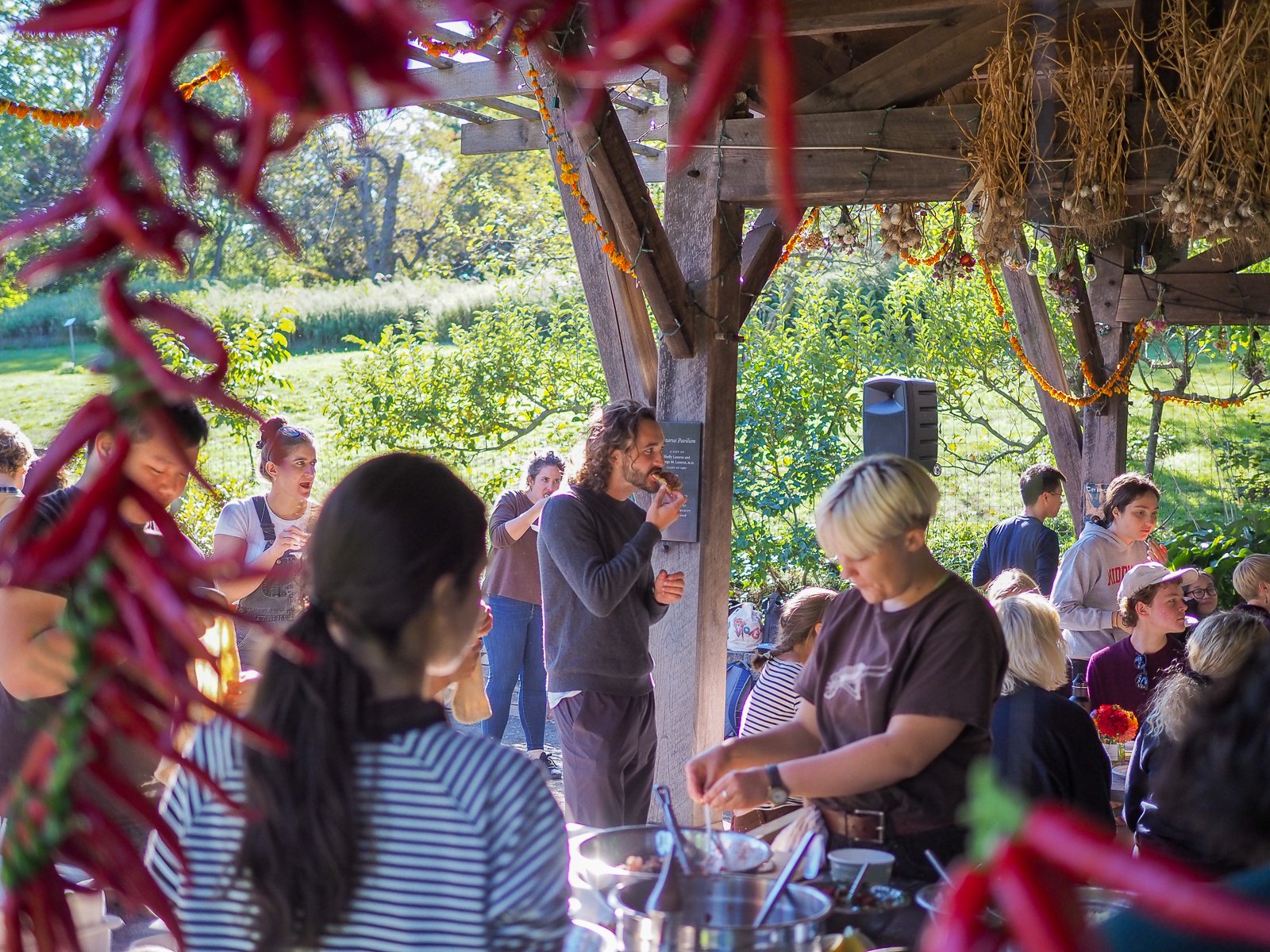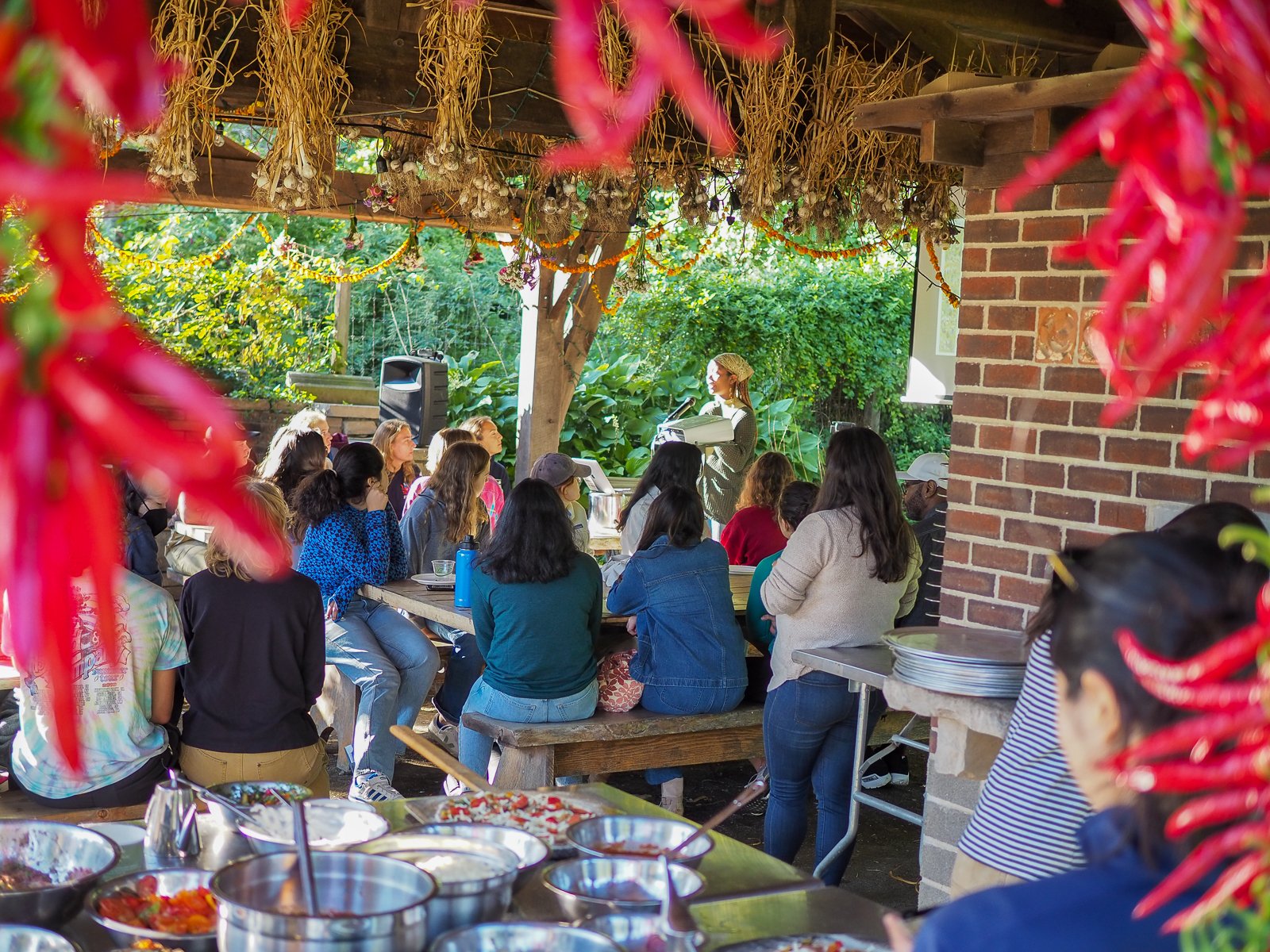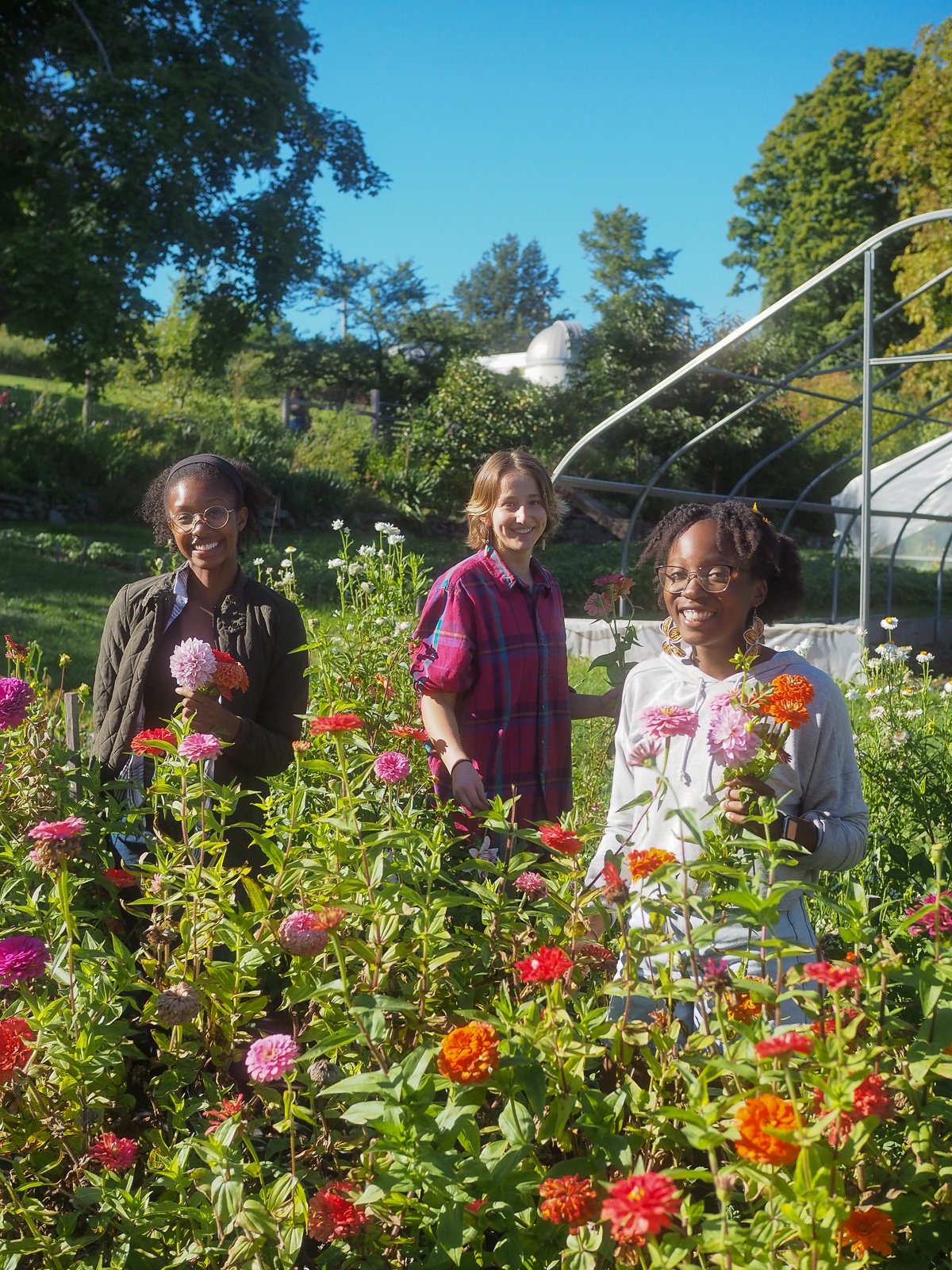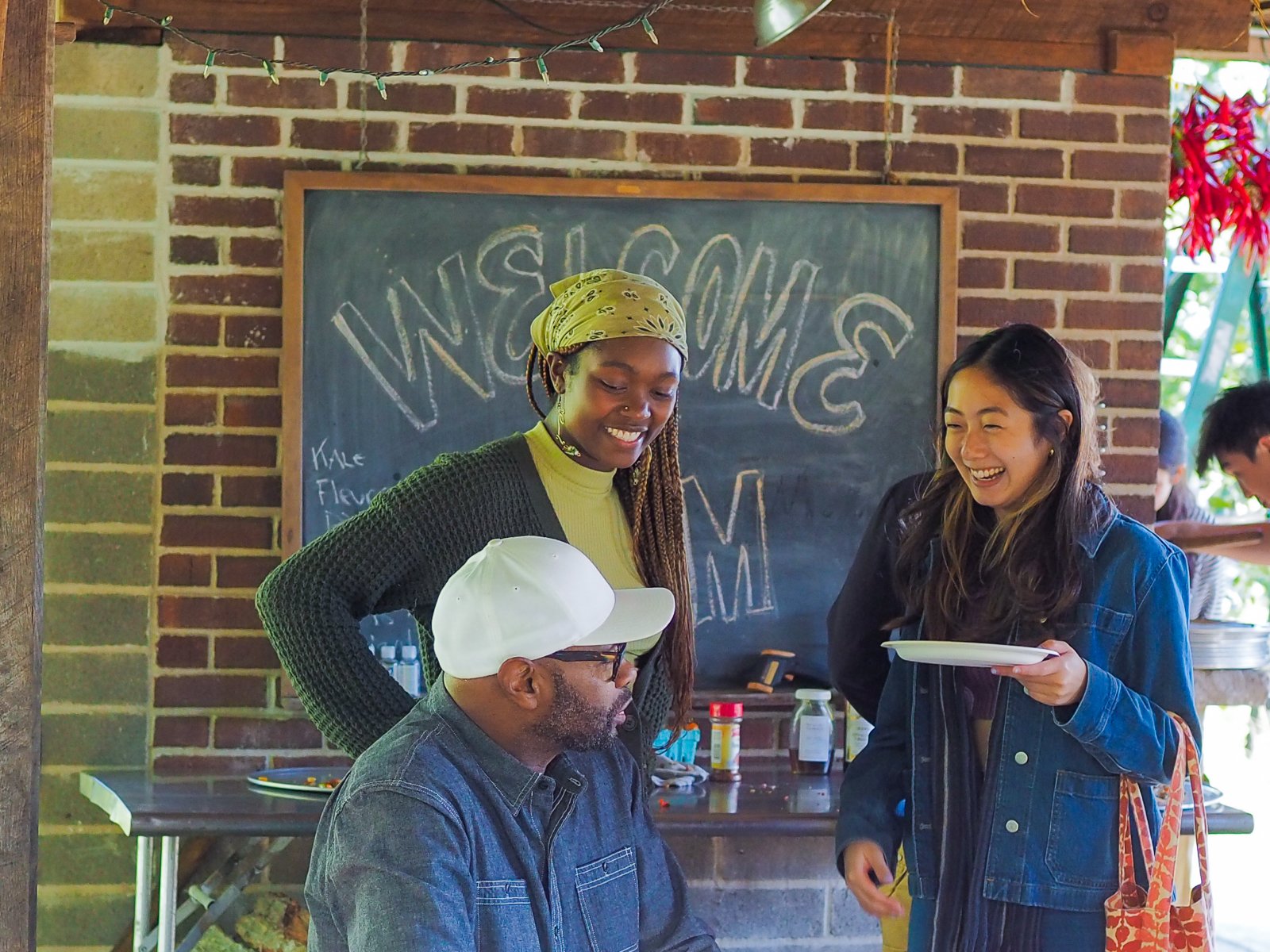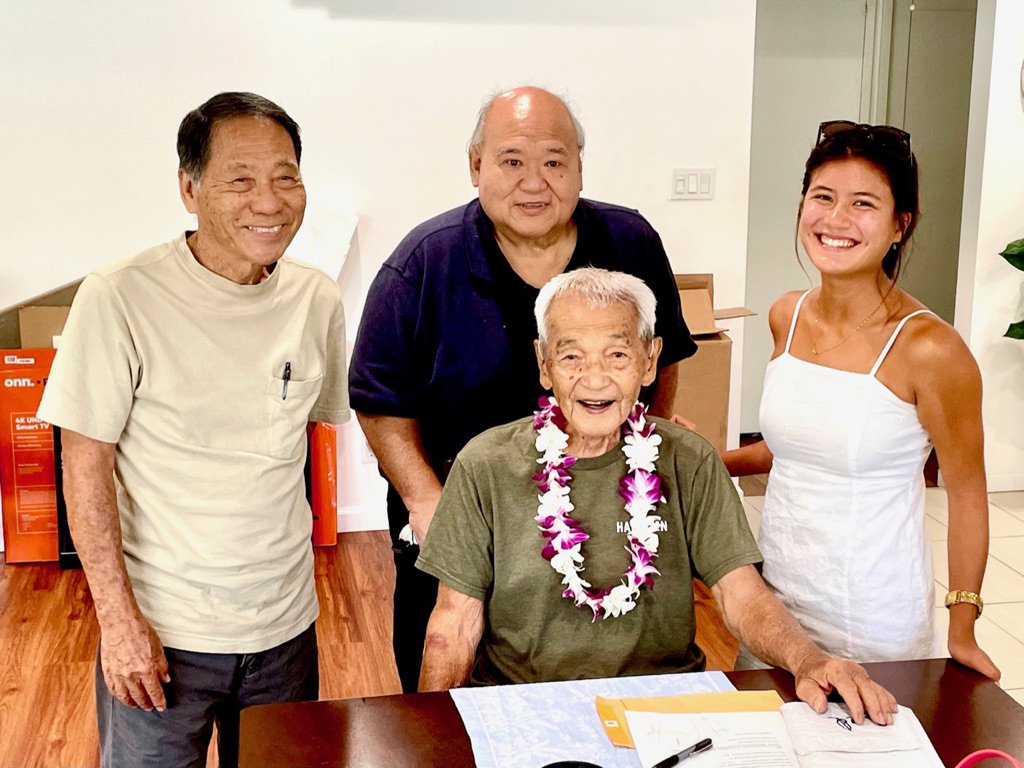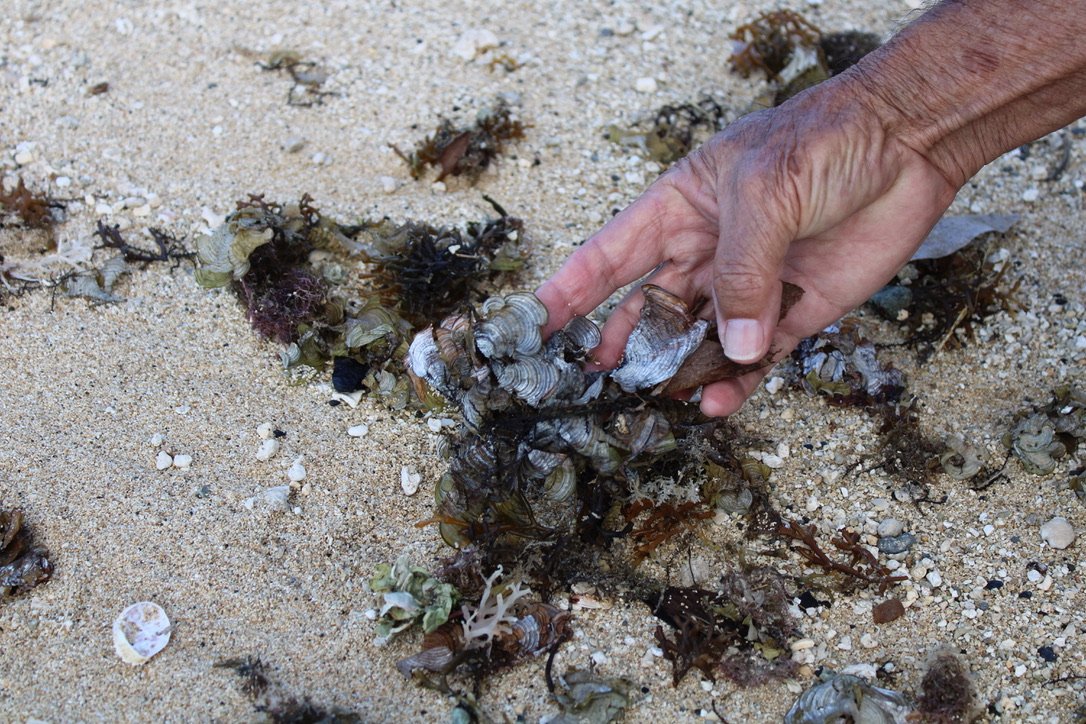The pib's cooking process relies on hot stones, fired in the pit, to hold and release heat.
All Pib Slow Play: A Sedimentation of History and Sound (APSP) is a hybrid decelerationist music and food programming project. It sets cumbia rebajada (slowed cumbia) and ambient sounds to the cooking of tamales using an underground pit-roasting method: the Pib. All Pib Slow Play was conceptualized and designed by Miguel Gaydosh beginning in 2021. This is an ongoing project and research will continue to be gathered on the Arena channel Suena la Cumbia, with occasional updates made to the website.
The project is named after a record by DJ Screw and a letter to Elysia Crampton. APSP is a means to research, practice, and evolve traditions that generations of Indigenous families have kept alive across the Americas, while sharing the fruits of this process and celebrating the soil.
Chef Sandra Trigeuros and family preparing and cooking the primary dishes throughout the evening.
APSP synthesized after learning about Rosalia Chay Chuc’s traditional cooking methods in the Yucatán, which sparked memories of my family's tamales and pib cooking in Southwestern Guatemala. These inspired me to revisit cumbia rebajada videos found online, and realize the potential of combining the pib’s ancient slow cooking techniques with slowed cumbia’s intoxicating rhythms.
As a performance, APSP centers slowness as a vehicle, and Kency Cornejo and Diana Taylor’s ideas of embodied acts “as an essential mode of cultural, spiritual and social representation and transmission of knowledge," to awaken a resistance to Yomaira Figueroa's concept of destierro (uprooting) through memories of home/lands and land practices.
"They used to have very detailed history books. But when the Spaniards came, they burned thousands of them. So they had to pass all the information by mouth."
Ricardo Muñoz
Chef's Table: BBQ Season 1, Episode 4: “Rosalia Chay Chuc”
2020
While the first iteration of APSP was about sharing food on a farm and broadcasting on Local Radio, the next version will focus on the idea of a social sculpture in an urban pocket forest—at Cactus Store NY's garden this Summer—as a space for people to gather and learn through programming surrounding the idea of deceleration.
Guests and students learned hands-on through food preparation.
APSP is an investigation of the potential for socio-ecological interfaces—bringing ‘nature’ and ‘culture,’ the ancient and contemporary, together through living forms—from the ground beneath our feet to sounds reverberating down city blocks.
“Not an earthquake but an accretion, a sedimentation of history and sound [...] I don’t think I’ve ever listened to anything so geologic. A certain chemical trace inheres, like the smell of rock after rain, recording or suggesting things now invisible but not gone.”
Jeffery J. Cohen
"A Letter from Jeffrey J. Cohen to Elysia Crampton,” DIS Magazine
2015
APSP is a chance to move slower with and closer to the earth through a mixing of sounds, flavors, and links lost and found. Digging beneath the surface of our daily accelerationist culture, pib and rebajada methods come together to manipulate space and time, unearthing impossible moments in cavities of potential.
Laser-etched banana leaves served as as informal placemats.
Thank you to Sandra Trigueros and her family, Geovanni Barrios, Jacqueline Munno, Isabel Rooper, Pancho Blood, Jeemin Shim, and Kyle Richardson. The first volume of All Pib Slow Play was supported by the Yale Sustainable Food Program, and Yale School of Art's inaugural student-curated exhibition, No White Walls.
You can find more information on allpibslowplay.org and Miguel will be sharing updates on Instagram in the coming months.
A crowd of students and guests gathered under the Pavilion to eat, drink, and learn.






